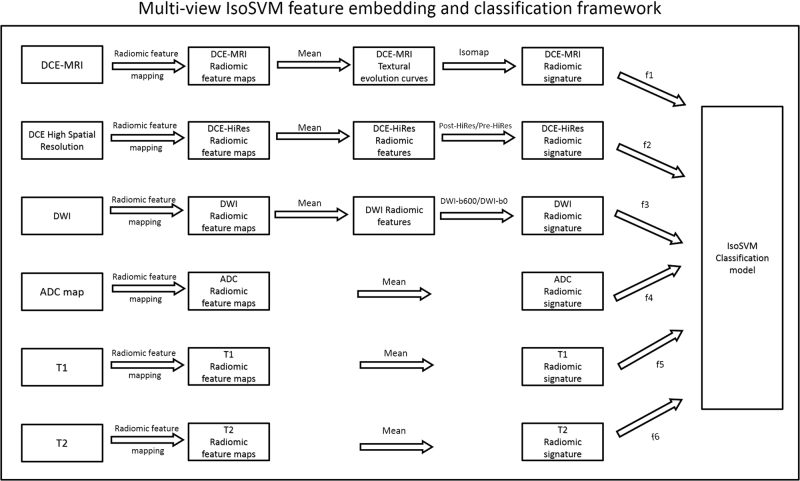Fig. 5.
Illustration of the multi-view feature embedding and classification framework. The six MRI datasets are first transformed into radiomic feature map (RFM) space using radiomic feature mapping. The RFMs for DCE-MRI are transformed into textural evolution curves, which are subsequently reduced to one dimensional embedding using the Isomap algorithm. The vector of one dimensional embedding corresponding to each RFM forms the 30 dimensional DCE-MRI radiomic signature. The RFMs for DCE High spatial resolution MRI and DWI are transformed into their respective radiomic signatures based on the textural evolution metric. The remaining datasets of ADC map, T1WI, and T2WI are directly transformed into radiomic signatures by calculating the mean of the RFMs. Finally, subsets of features (f1, f2,…,f6) from each RFM signature form a unified RFM signature used to train the IsoSVM Classification model

